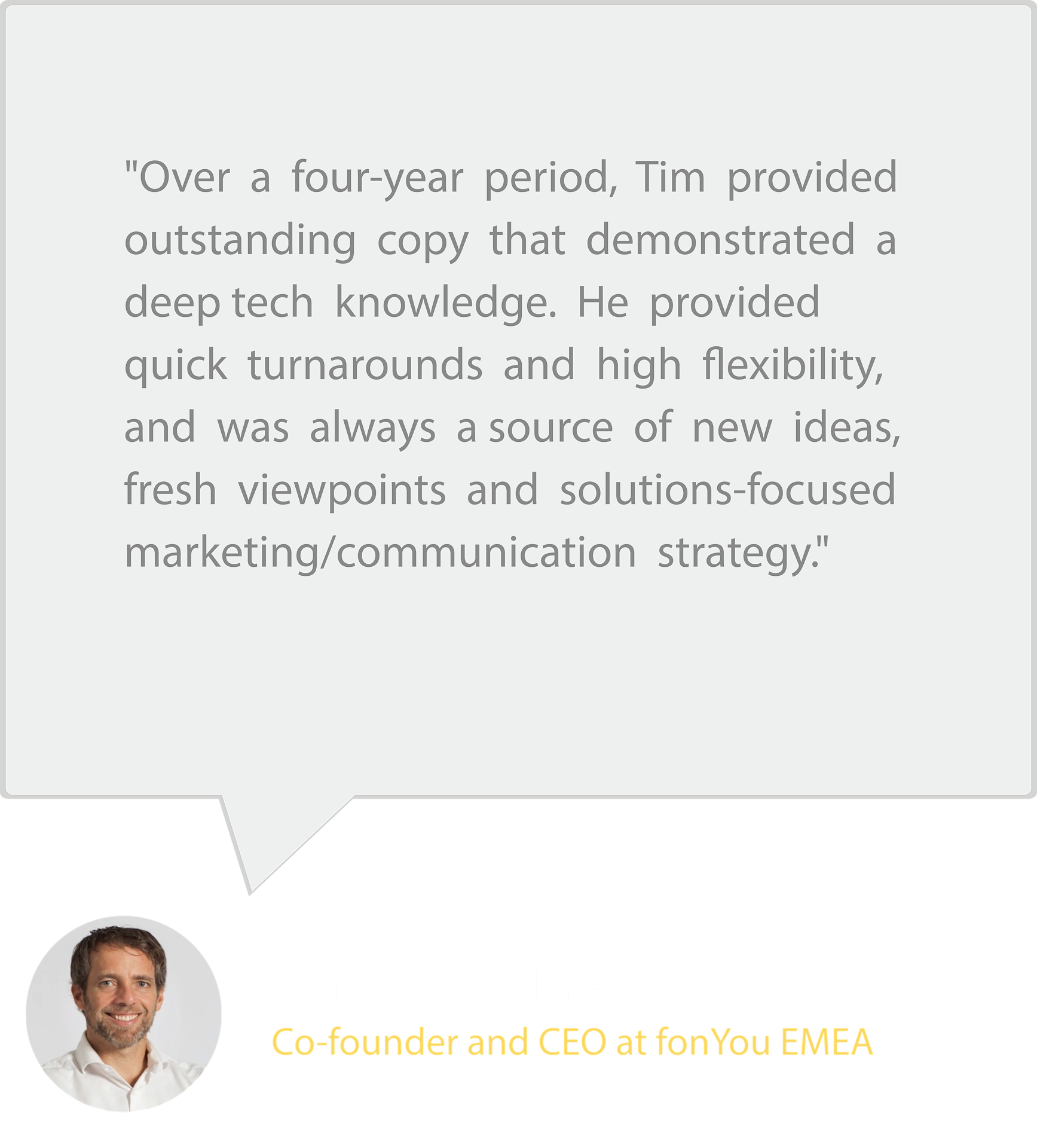PRODUCT
Here's what we can do for you.
Words that work
Content marketing that performs
PORTFOLIO
A few samples from over ten years of work
SELECTED CLIENTS


















ABOUT
Woods Copywriting has provided the benchmark standard in financial copy and content for the world’s leading financial institutions, SMEs, and startups since 2012.
Clients include Mastercard, JP Morgan, EY, Broadridge, Samsung Finance, ADP, Dell, Oanda, Ocrolus, and many others.

Hello. My name is Timothy Woods.
timothy@woodscopywriting.com
Senior copywriter and content strategist Timothy Woods currently lives in Dublin City, Ireland.
He previously lived in Barcelona, Manchester, and Mexico City.
Tim is also a highly experienced project manager and Spanish language translator.
Three promises
1. The utmost standards of professionalism.
2. We do what we say we will do, without exception.
3. A collaborative, open-minded, solutions-oriented approach.
Don't just take our word for it though…
ARE YOU READY?
Let's take your content performance to the next level.
Get in touch at timothy@woodscopywriting.com



